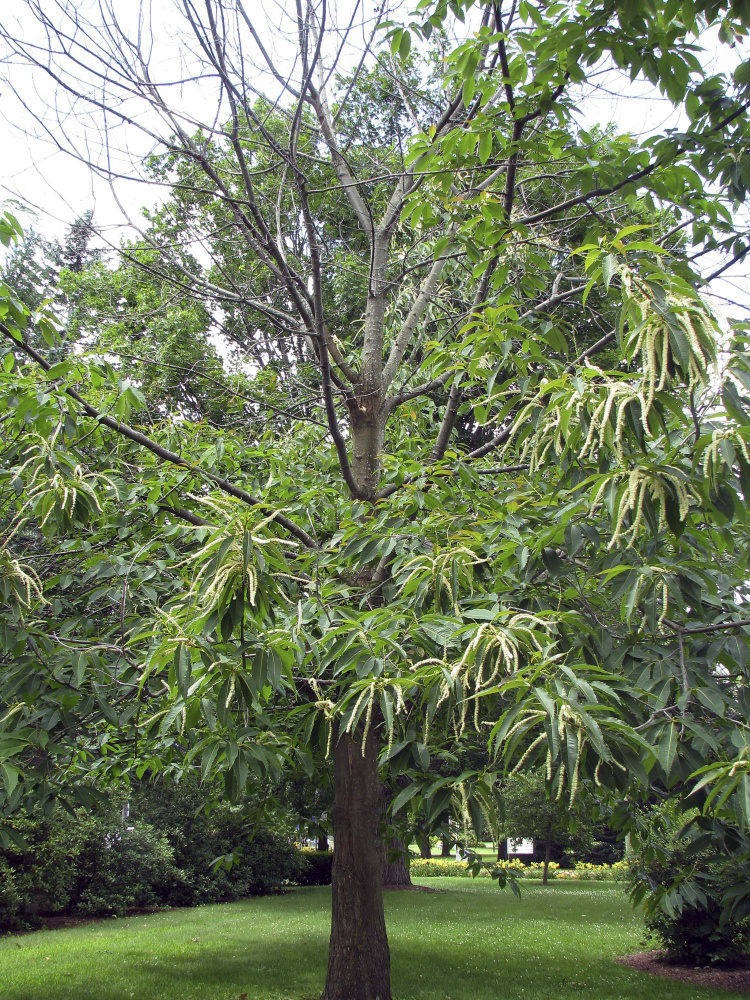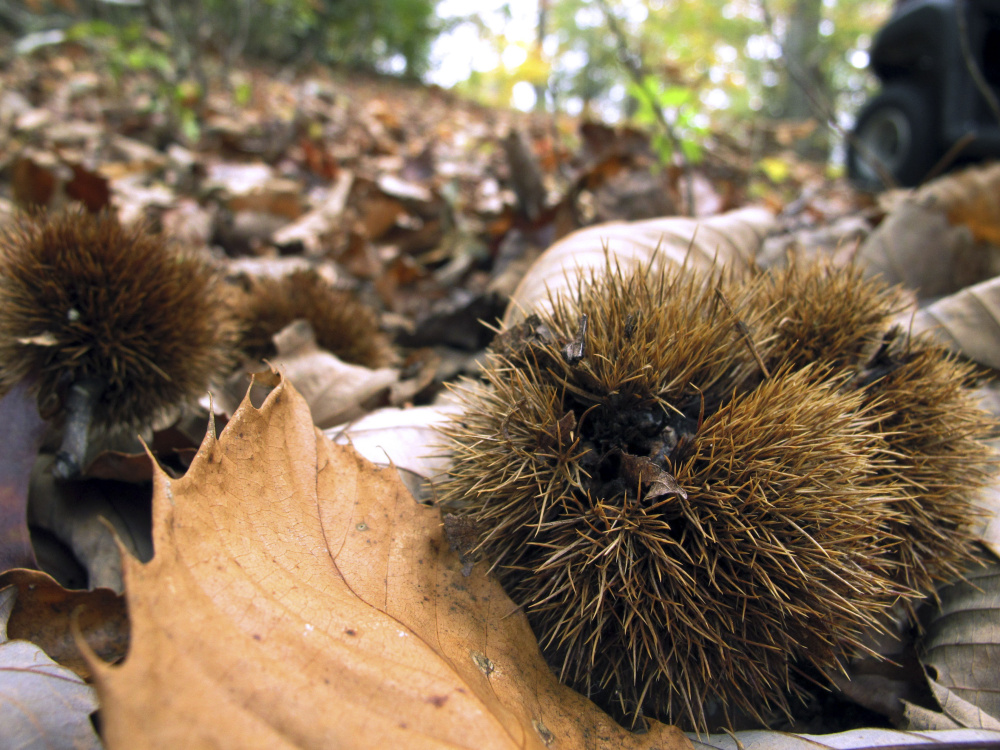CONCORD, N.H. — Hold off on lighting that open fire – chestnut trees being planted by the University of New Hampshire won’t produce a crop for roasting for at least five years. But officials hope the project will help restore a species that has been nearly wiped out by a blight that has killed trees from Georgia to Maine.
Students will begin clearing land this winter to prepare for the spring planting of 350 trees that have been crossbred with blight-resistant strains. The project is a joint effort between the university’s New Hampshire Agricultural Experiment Station and the American Chestnut Foundation.
Kendra Collins, the foundation’s New England science coordinator, said American chestnuts were very common until about 100 years ago, when a fungal disease was accidentally brought into North America via imported trees.
“That has effectively removed chestnuts from our landscape. We consider the species to be functionally extinct, rather than actually gone, because chestnut does resprout from its root system, but typically those trees don’t survive very long,” she said. “Blight is still very much around, so these trees aren’t living to maturity, they’re not flowering, they’re not producing nuts, they’re not really providing any of the benefits they used to in the landscape.”
The American chestnut’s rot-resistant wood was valued for furniture and construction, while the nuts provided food for people and a wide variety of wildlife. In New Hampshire, they were plentiful throughout the southern counties, up to about the Lakes Region, Collins said, but blight likely came through around the 1920s.
Created in 1983, the foundation harvested its first potentially blight-resistant chestnuts in 2005, and since then it has been testing them in both forest and orchard settings. Steve Eisenhaure, land use coordinator with the UNH Office of Woodlands and Natural Areas, is overseeing the new project, which is similar to work being done in other states.
By carefully monitoring the trees, researchers eventually hope to determine the best way to reintroduce the species across a wider area, he said. In the meantime, the project will give students a chance to gain research experience.
The chestnut plantation will be UNH’s fourth research plantation at Kingman Farm. Other areas are devoted to white pine, red spruce and pitch pine and are used by researchers with UNH and the U.S. Forest Service.
“It’s an important thing for our classes to use, so just simply having different plantings and different species in comparison to each other will be valuable,” Eisenhaure said.
Send questions/comments to the editors.




Success. Please wait for the page to reload. If the page does not reload within 5 seconds, please refresh the page.
Enter your email and password to access comments.
Hi, to comment on stories you must . This profile is in addition to your subscription and website login.
Already have a commenting profile? .
Invalid username/password.
Please check your email to confirm and complete your registration.
Only subscribers are eligible to post comments. Please subscribe or login first for digital access. Here’s why.
Use the form below to reset your password. When you've submitted your account email, we will send an email with a reset code.